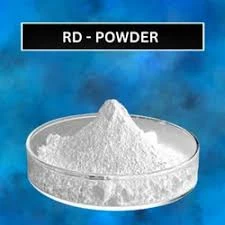
Dec . 15, 2024 15:08 Back to list
Hydroxyethylcellulose Powder Uses and Benefits in Various Applications and Industries
Hydroxyethylcellulose Powder An Overview of Its Properties and Applications
Hydroxyethylcellulose (HEC) is a non-ionic, water-soluble polymer derived from cellulose. This chemical compound possesses unique properties that make it a versatile ingredient in various industries, particularly in cosmetics, pharmaceuticals, food, and construction. Its ability to form gels, thicken solutions, and stabilize emulsions has led to its widespread use, making it a crucial substance in modern formulations.
Properties of Hydroxyethylcellulose Powder
Hydroxyethylcellulose is characterized by its thickening, gelling, and stabilizing properties. It is a white, free-flowing powder that is odorless and non-toxic. One of its most notable features is its high degree of solubility in water, allowing it to dissolve easily to form clear solutions. The degree of substitution (DS) of hydroxyethyl groups on the cellulose backbone influences its viscosity and solubility, making it customizable for different applications.
The viscosity of HEC solutions varies depending on concentration, temperature, and the ionic strength of the surrounding medium. This property is beneficial in creating stable formulations with desired thickness and texture. Additionally, HEC is resistant to hydrolysis, making it stable under various pH conditions, which is essential for certain applications in cosmetic and pharmaceutical products.
Applications in Various Industries
1. Cosmetics and Personal Care Hydroxyethylcellulose is widely employed in the cosmetic industry due to its excellent thickening and emulsifying properties. It is used in a variety of products including shampoos, conditioners, lotions, and creams. HEC enhances the texture and feel of these formulations, providing a desirable consistency without greasiness. Moreover, its ability to form a film on the skin can aid in moisture retention, making it a valuable ingredient in moisturizing products.
2. Pharmaceuticals In pharmaceuticals, HEC serves as a binder and a controlled release agent in tablet formulations. Its thickening properties help in suspending active ingredients uniformly, improving the bioavailability of medications. Hydroxyethylcellulose is also used in ophthalmic solutions, where its viscosity contributes to prolonged contact time in the eye, enhancing the therapeutic effect of eye drops.
hydroxyethylcellulose powder

3. Food Industry In the food industry, hydroxyethylcellulose acts as a thickening agent and stabilizer in various food products. It is commonly found in sauces, dressings, and dairy products, helping to maintain texture and prevent separation. HEC is regarded as safe for consumption and is suitable for use in gluten-free and low-calorie food products, as it can improve mouthfeel while reducing fat content.
4. Construction Hydroxyethylcellulose is also used in construction materials, particularly in tile adhesives and cement mixes. It improves workability and enhances the spreadability of these materials. Additionally, HEC helps retain moisture during the drying process, which is crucial for achieving optimal adhesion and preventing cracking.
5. Industrial Applications Beyond the aforementioned industries, HEC finds applications in various industrial settings, such as oil drilling and textile manufacturing. Its viscosity-modifying properties are utilized to create drilling fluids that provide lubrication and carry cuttings to the surface. In textiles, HEC is used in printing pastes and finishing agents to improve fabric texture and printing quality.
Environmental and Safety Considerations
Hydroxyethylcellulose is considered to be environmentally friendly and biodegradable. It is derived from natural cellulose, making it a renewable resource. Additionally, HEC does not exhibit toxicity, which further enhances its appeal as a safe ingredient in consumer products. Its compatibility with a wide range of substances allows it to be used without adverse effects, contributing to its popularity in various formulations.
Conclusion
Hydroxyethylcellulose powder is a remarkable polymer with a broad range of applications across multiple industries. Its unique properties as a thickening agent, emulsifier, and stabilizer make it an essential ingredient in cosmetic, pharmaceutical, food, and construction formulations. As industries continue to innovate and seek safe, effective ingredients, hydroxyethylcellulose is poised to maintain its importance and relevance, supporting the development of high-quality products that meet consumer demands. Whether enhancing the texture of a moisturizer or improving the stability of a food product, HEC remains a vital component in the formulation landscape.
-
Versatile Hpmc Uses in Different Industries
NewsJun.19,2025
-
Redispersible Powder's Role in Enhancing Durability of Construction Products
NewsJun.19,2025
-
Hydroxyethyl Cellulose Applications Driving Green Industrial Processes
NewsJun.19,2025
-
Exploring Different Redispersible Polymer Powder
NewsJun.19,2025
-
Choosing the Right Mortar Bonding Agent
NewsJun.19,2025
-
Applications and Significance of China Hpmc in Modern Industries
NewsJun.19,2025







